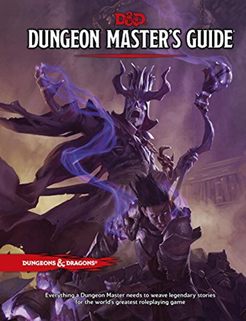 I’m currently writing a Convention-Created-Content adventure for premiere next year. It also happens to be an investigation.
I’m currently writing a Convention-Created-Content adventure for premiere next year. It also happens to be an investigation.
Yes, two things I’d never thought I’d do.
Investigations are tremendously popular as D&D Adventurers League scenarios, but they’re very different to the D&D scenarios I grew up with. Those scenarios involved some wilderness travel and a lot of fighting monsters in a dungeon, perhaps with some interesting features to explore and examine.
The first place I really became aware of investigative adventures was through the Call of Cthulhu game, because – as you’re far more likely to run away from monsters than fight them in that game – the investigation was its default format.
The real benefit to running a mystery adventure is that they give plenty of opportunities for the players to explore and role-play, two of the three pillars of D&D play. I’m sure you can name lots of D&D adventures that have no real role-playing in them. It’s nice to have the option to engage the people in your group that enjoy talking. When you have a city-based investigation, you also get the chance to do a lot of world-building. It’s nice for the players to feel that the city their characters keep coming back to is a real place where things happen.
However, despite their benefits, it doesn’t mean they’re easy to write.
My biggest fear is that this happens:
“Have you found a clue, Holmes?”
“Yes! This bootprint means we are seeking a left-handed pirate with a limp, who dresses in floral prints on Wednesday. As it happens, I know the very man! To the culprit, Watson!”
When you’re trying to entertain players for a running time of 4 hours, having the investigation be over after the first clue is found is a bit of a problem.
The converse: that the players never find a solution, is also worrisome. Players can be incredibly bad at finding and interpreting clues and puzzles.
You want a trail: the first clue leads to the second, the second to the third, the third to the solution. Or, because players miss clues, three clues that lead to three more… just so only the most unobservant miss them.
One of the tenets of the GUMSHOE system is that finding clues shouldn’t be hard: the interest lies in what the players do with them. Or at least, I think it is. I’ve always found it (in particular Trail of Cthulhu) to be a system I have great trouble in understanding how it works. However, it is a sentiment I share: watching how the players put together the clues they’ve found is going to be far more interesting than watching them fail Intelligence (Investigation) checks and get frustrated.
What I’d like is clues that can be interpreted in different ways, lead to red herrings, but put together and looked at the right way lead to the solution.
However, determining what I’d like to happen and actually doing it? Yes, working out the theory is much easier!
I spent a month just trying to come up with a structure I liked. I’m still not happy with it, though there are aspects I like. I knew what the crime was, I didn’t know what clues would be left behind. That took most of the development time. Once I put it together, it looked worryingly short.
However, I have faith that the players will not solve it instantly and so can have a happy time role-playing and trying to solve the mystery!
One thing I tried to do with this adventure was allow the players to get help. Perhaps they have contacts that can help them unravel it. I don’t think I’ve developed that enough, but it’d be very easy to go down a rabbit hole and emerge a year later with the “perfect” adventure, but eleven months past the deadline. You can’t include everything; the trick is to include the important things. Did I miss stuff? Only one way to find out…
…on to the playtest!

Merric,
If you want other eyes on it, I’d be more than happy to help how I can.
If you have a Roll20 account, I’d be happy to let you see something I’ve been working on for a while which is in a similar vein. A ‘time pressured’ murder investigation scenario setup more with 3.5E in mind, but could potentially work in 5E with some massaging.
Let me suggest that the key to the mystery is having at least Three possible solutions, or even mysteries and the clues are fluid. They are where the players are, not in a specific place. Wherever the players think the clues lead, that’s where they go. lol.
For example, in a murder mystery, you present several possible suspects. Several suspects have motives for killing the victim, and the clues such that any of the suspects could be responsible. As play progresses, the players come up with several possible theories of the crime. The one that sounds reasonable is the solution.
Conversely, if the players get to the solution too quick have out. Maybe the real killer was only disguised/ doopleganged/ illusioned as the suspect to throw the law off their trail.
The key is to remain fluid, and not get attached to any one path of play.
I think you might find it useful to have a look at Justin Alexander’s Blog regarding his Three-Clue-Rule and further thoughts on investigative adventures.